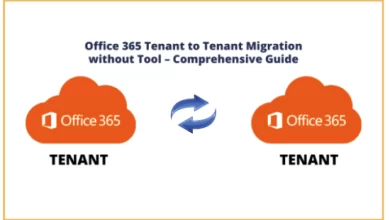Golden Tips for Cyber-Attack Prevention and Ransomware Recovery

Cybercriminals have been operating for years to earn illegal money for financing further unlawful activities. The frequency of these attacks has increased many folds in a few years. The main reasons behind this uprise are; one, cybercriminals have become bolder since the inception of cryptocurrency, two, they have become more adept in their work because of learning sources like YouTube, third, they can now find more vulnerabilities for attacks because of the trend of remote working. Only those companies have withstood these attacks that have installed good prevention and ransomware recovery strategy around their data and systems.
If you are keeping yourself updated about the recent news on cybercrimes, you know that a number of companies have been affected by ransomware recently. They were forced to bear the losses of downtime, potential clients, and some even paid the ransom amount. There are four possible scenarios you will have in an event of an attack. First, you pay the ransom amount and they return your data and control over your system. Second, you pay the ransom and they run away without completing their part of the bargain. Third, you don’t pay the ransom and they either destroy your data or sell it to your competitors. And fourth, you don’t pay the ransom instead you follow the enterprise security and recovery plan. The last one is the most feasible, now let us discuss how you can go with it.
What is Ransomware?
Ransomware is a type of virus/malware that threat actors use to infect computers and encrypt files to earn ransom in return. Once ransomware enters a system, your whole enterprise security gets compromised. This is because it tries to spread and infect all the connected systems, including shared storage drives and other accessible computers. The files and systems will remain encrypted until you pay them the demanded ransom amount. And remember, even after paying them the ransom, they will sometimes leave back doors for future attacks.
Tips to Follow for the Prevention of Ransomware Attacks:
Keep Your Systems and Software updated:
Make sure that all your applications and operating systems (OSs) are updated with the latest patches. This is because cybercriminals are always on the trail of vulnerabilities. So, leave no door open for them.
Use Caution when Clicking on Links and Downloading Attachments:
Email phishing is the most common method internet extortionists use to hijack your systems. So, whenever you receive an email containing some link or attachment, don’t click on them immediately. Instead verify the email, links, and attachments before doing anything.
Don’t Click on Ads:
When you visit any website and find some provoking ads on it, try not to open them because these ads may contain some malware. And clicking on them will start the process of a ransomware attack.
Always Keep Your Personal Information Safe:
Don’t share your important credentials through emails or other online sources without encryption. This is because bad actors are always spoofing your network and emails. Also, share this information only with the most trusted individuals.
Inform Your IT Team if Find Any Irregular Activity:
Whenever you feel that something abnormal is going on in your system or network, inform your IT team immediately and go offline. Doing so will most probably save you from the maximum impact of the attack.
Install a good Quality Anti-Virus and Firewall:
Your anti-virus and firewalls are the vanguards of your security strategy. So, they should be the best and always updated for strengthening your security system.
Hire Data Protection Services:
There are things that you can do to avoid ransomware attacks and there are some things that are completely out of your reach, Hence for doing those things you need to hire data protection services.
Tips to Follow for Ransomware Recovery:
- If you have kept backups of your data, use those backups for data recovery but before doing so, make sure you have removed the virus and the backups are not infected.
- Given that you don’t have backups, try data recovery software to recover your data. Cybercriminals usually make copies of your files, delete the original ones and encrypt the copies. Therefore, these recovery software can help with recovery.
- When the above two methods don’t work, try the window restoration technique. There are chances that this will work for you.
If all the above methods of ransomware recovery fail, try reproducing your data through hard copy documents and emails collaborations. This is a lengthy process but it is better than paying the ransom.




